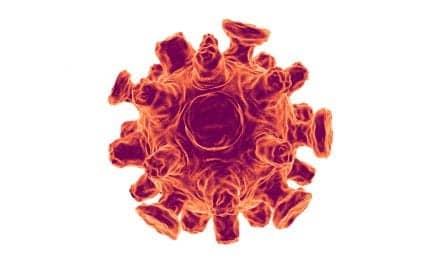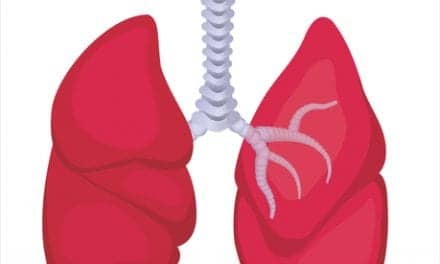 • RT Board Member Releases New Publication • RT Board Member Releases New Publication In conjunction with two other authors, Paul Mathews, PhD, RRT, FCCM, FCCP, a member of RT’s editorial advisory board, recently released a book called Foundations of Respiratory Care. Published by Delmar Learning, the book includes sections on essential diagnostics and therapeutics, levels of delivery, applications, history and scope of respiratory care, its legal and ethical concerns, and the applied sciences of respiratory care. The coauthors are Mathews, an associate professor at the University of Kansas Medical Center, Kansas City; Ken Wyka, MS, RRT, director of marketing at Allied Health Care Services in Orange, NJ; and William F. Clark, PhD, RRT, director of the respiratory care program at the University of Medicine and Dentistry of New Jersey. • Bioengineered Plant Prevents Experimental Asthma Data from an Australian study show that the consumption of a plant genetically modified to act as a vaccine prevented the onset of experimental asthma in mice. The researchers fed one group of mice narrow leaf lupin altered to express a gene for the potential allergen sunflower seed albumin. A second group of mice ate unaltered lupin. When the investigators attempted to induce asthma in the mice by exposing them to high levels of sunflower albumin, the mice who ate the genetically modified plant showed no response. The mice who ate the regular lupin developed asthma. The authors say the findings, published in the Journal of Immunology, suggest that plant-based vaccines may provide more treatment options. “Most treatment at the moment is based on suppressing the immune response. The plant-based vaccine modifies the immune response to have an ongoing protective effect,” said one of the study’s authors, Simon Hogan, PhD, in an ABC Science Online report. Hogan, a molecular scientist at the Australian National University in Canberra, also told ABC that human trials may take place in 10 or 15 years. |
Study Differentiates Anthrax From Flu
Researchers have identified key symptoms that may help distinguish inhalational anthrax from influenza and other common respiratory conditions, according to a new study. This information is being used to create an evidence-based prehospital screening protocol designed for response to a future bioterrorist attack.
Combining data from the 11 inhaled anthrax cases from 2001 with historical case reports of 17 additional patients, researchers at Weill Medical College of Cornell University compared the features of anthrax-related illness with more than 4,000 cases of common viral respiratory tract infections, such as the flu. While symptoms such as fever and cough did not reliably discriminate between anthrax and flu or flu-like illnesses, others—most notably neurologic problems like dizziness and confusion, serious gastrointestinal symptoms like nausea and vomiting, and shortness of breath—were much more common in patients with inhaled anthrax. Although sore throats and runny noses were present in some cases of anthrax infection, these flu-like symptoms never occurred without at least one of these other symptoms.
Four of the 11 patients who developed anthrax in 2001 originally were sent home with diagnoses of a viral syndrome, bronchitis, or gastroenteritis, according to the Agency for Healthcare Research and Quality. The study was published in the September 2 issue of Annals of Internal Medicine.
One Respiratory Disease Might Be Two
Asthma and severe asthma might be two different diseases, according to results of a large international study published in the September issue of the European Respiratory Journal.
The study compared 163 subjects with severe asthma to 158 subjects with mild to moderate asthma. Even with much higher doses of inhaled corticosteroids and one third receiving regular therapy with oral steroids, those with severe asthma had more frequent asthma exacerbations and a much reduced quality of life, according to the authors. Study subjects with mild to moderate asthma were able to control their asthma with inhaled corticosteroids.
Also, in the patients with severe asthma, measurements of biomarkers of inflammation and physiological functions showed a different profile. In particular, throughout Europe, allergy was less common in the severe asthmatics. Females were more than four times as likely to have severe asthma while only slightly more likely to have mild to moderate asthma.
These different biomarkers and the ineffectiveness of regular asthma medications suggest that severe asthma is a distinctly different form of asthma, rather than simply more asthma symptoms, the authors say.
“The implications of the study are that in patients with more severe, chronic intractable asthma, different types of therapy need to be considered,” says Stephen T. Holgate, MRC clinical professor of immunopharmacology, RCMB division, at the Southampton General Hospital, United Kingdom, and one of the authors of the study. “Our own recent work here would suggest that such patients would benefit from therapy with the new monoclonal antibody treatments, including anti-human IgE and blocking strategies against the mediator of chronic severe asthma TNF-alpha.”
The investigators will embark on a new longitudinal study of biomarkers, clinical pathophysiology, and genotype that will be concluded in 2005.









